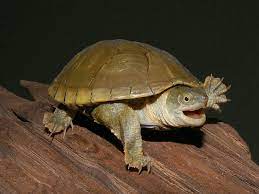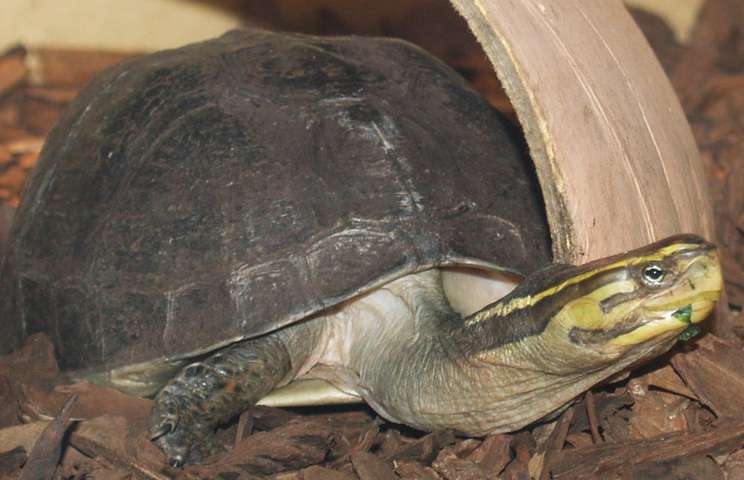
Yellow Mud turtles are only found in certain regions of northern Mexico, the Midwest, and the Southwest of the United States. These turtles spend a good deal of time on land and are found in wetland habitats like marshes and ponds. In sandy environments, Yellow Mud Turtles enjoy digging and burrowing.
The term “Yellow Mud Turtle” comes from the yellow patterns that surround their faces. These turtles have olive-colored shells. They have yellow plastrons as well. As carnivores, earthworms, mollusks, aquatic invertebrates, and crustaceans make up the majority of the diet of yellow mud turtles.
Care as a Pet

Housing
Yellow mud turtles are equally at home in and out of the water. This turtle species lives in water-filled ditches, marshes, ponds, flooded fields, oxbow lakes, sloughs, and rivers as its aquatic habitats. They prefer to bury themselves in mud in the colder months and the sweltering summer. This species needs a big tank if kept as a pet. A 40-gallon turtle tank is the bare least needed; the larger the tank, the better. Mud turtles like to swim in big tanks. You can keep two or more turtles in one tank because they are not violent against one another. Mud turtles require sunbathing, much like most aquatic turtles do. As a result, you must offer a place to sunbathe. For easy access, the sunbathing area needs a romp. The basking area needs to be at the same level as the water in the tank. A water heater can be used to control the temperature of the water in the tank, which should be between 70 and 75 degrees. While a UVB heat source with a temperature of about 90 degrees should be present in the area for sunbathing.
Feed
In contrast to many other aquatic turtles, mud turtles may eat both on land and in water. Insects, reptiles, amphibians, and other smaller animals than themselves are often what they eat. Although they will eat on land or in the water, they prefer to do so underwater. In addition to other turtle and fish eggs, they frequently eat fish, small clams, snails, mollusks, crayfish, shrimp, fish, carrion, and plants. They eat ticks, spiders, and earthworms as well. They eat the same things that most domesticated omnivorous and carnivorous aquatic turtles do. You can feed them items like snails, shrimp, earthworms, mealworms, feeder fish, lettuce, spinach, collard greens, and insects like crickets, tree bugs, and sow bugs. Additionally, they eat prepackaged turtle chow bought from supermarkets. Nevertheless, it’s a good idea to supplement their diet with animal protein, vegetables, and fruit to balance it out. Even though they eat both proteins and vegetables, mud turtles prefer turtle food designed especially for carnivorous turtles, such as Masuria Aquatic Turtle Diet.
Breeding
Yellow mud turtles mate in the months of April and May throughout the spring and summer as well as in September. Females typically deposit 6 to 8 eggs when they nest in June or July. In order to lessen the likelihood that all of their eggs will be discovered and eaten, they might build two distinct nests.
Table





